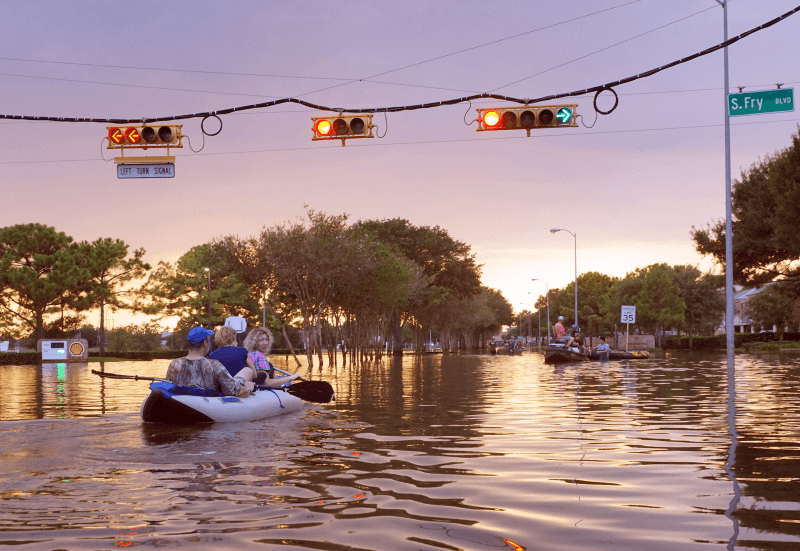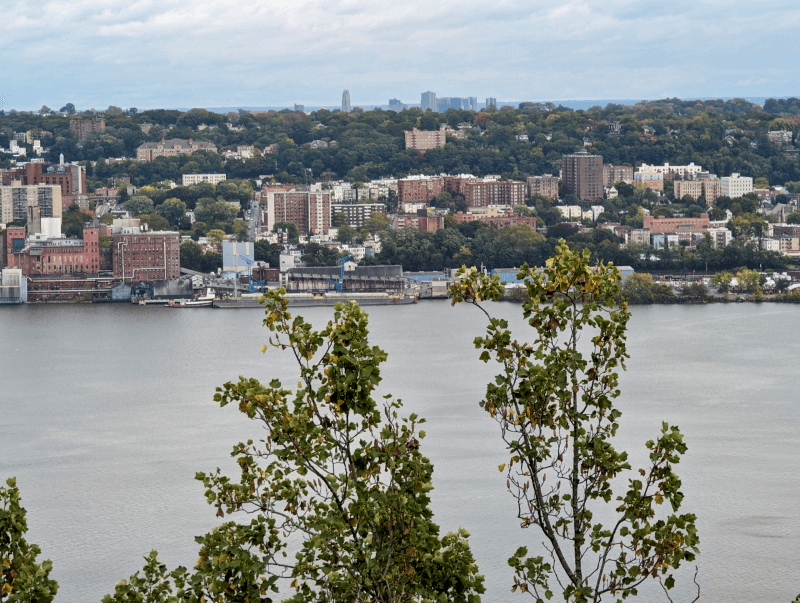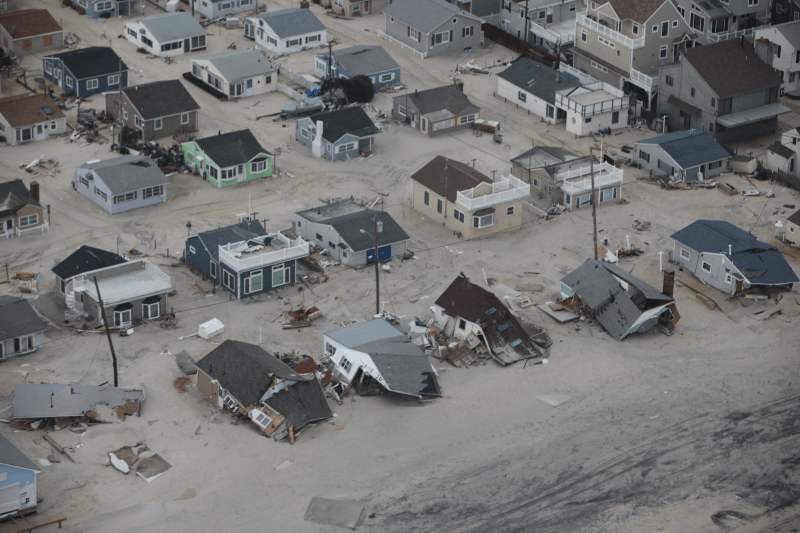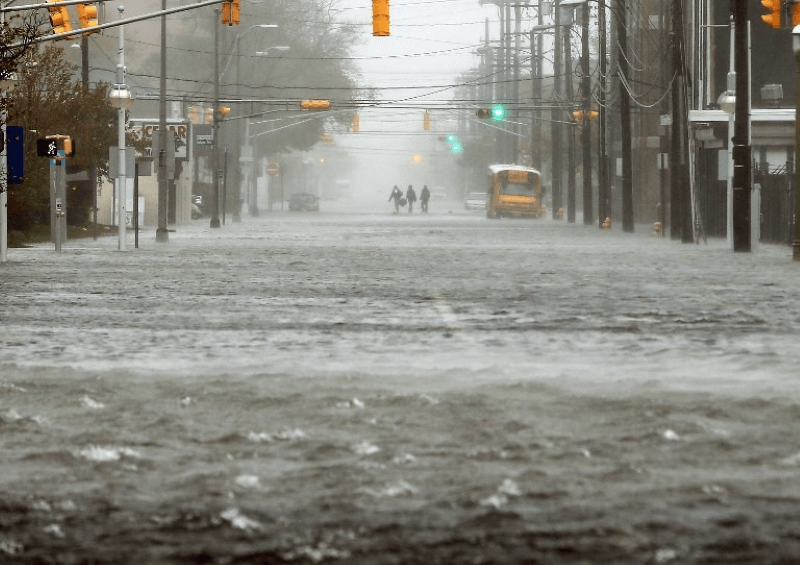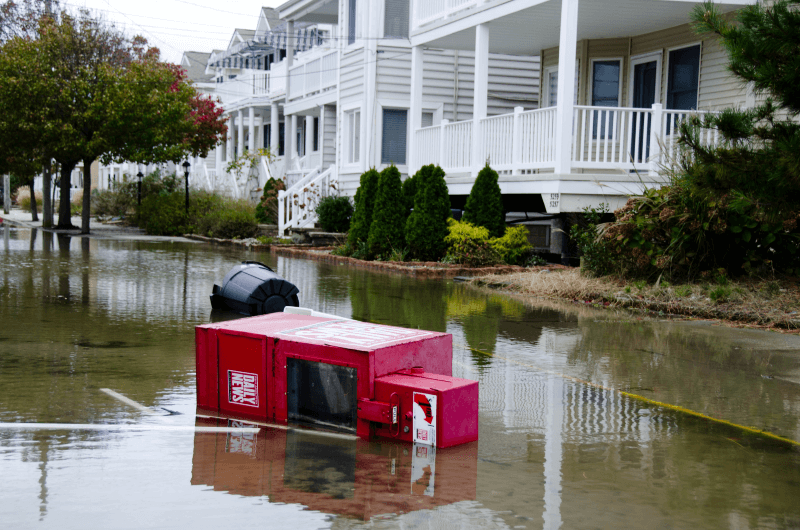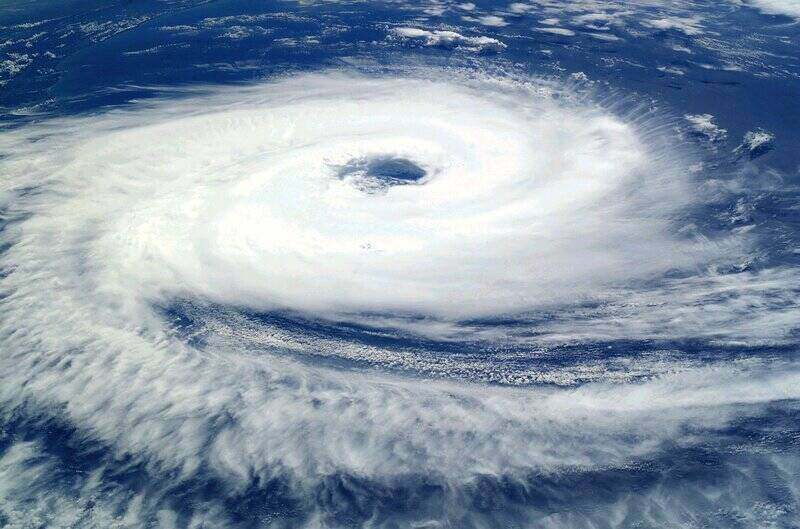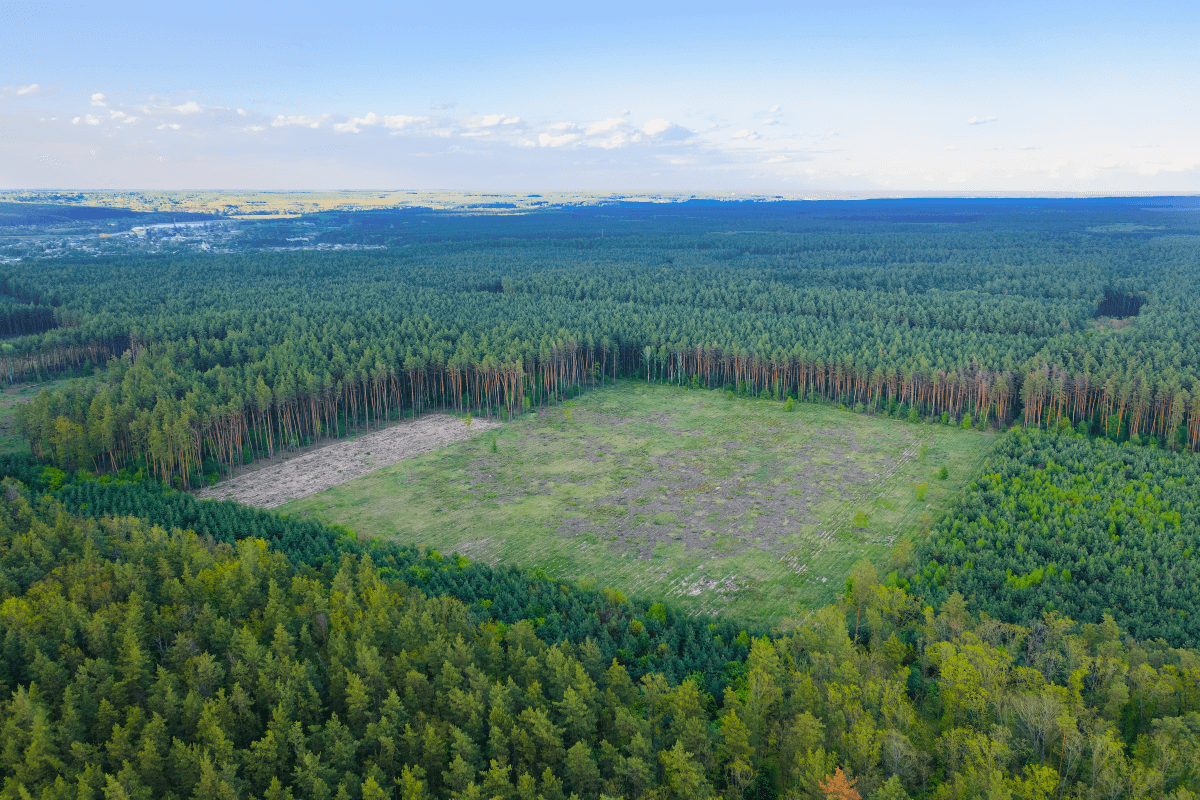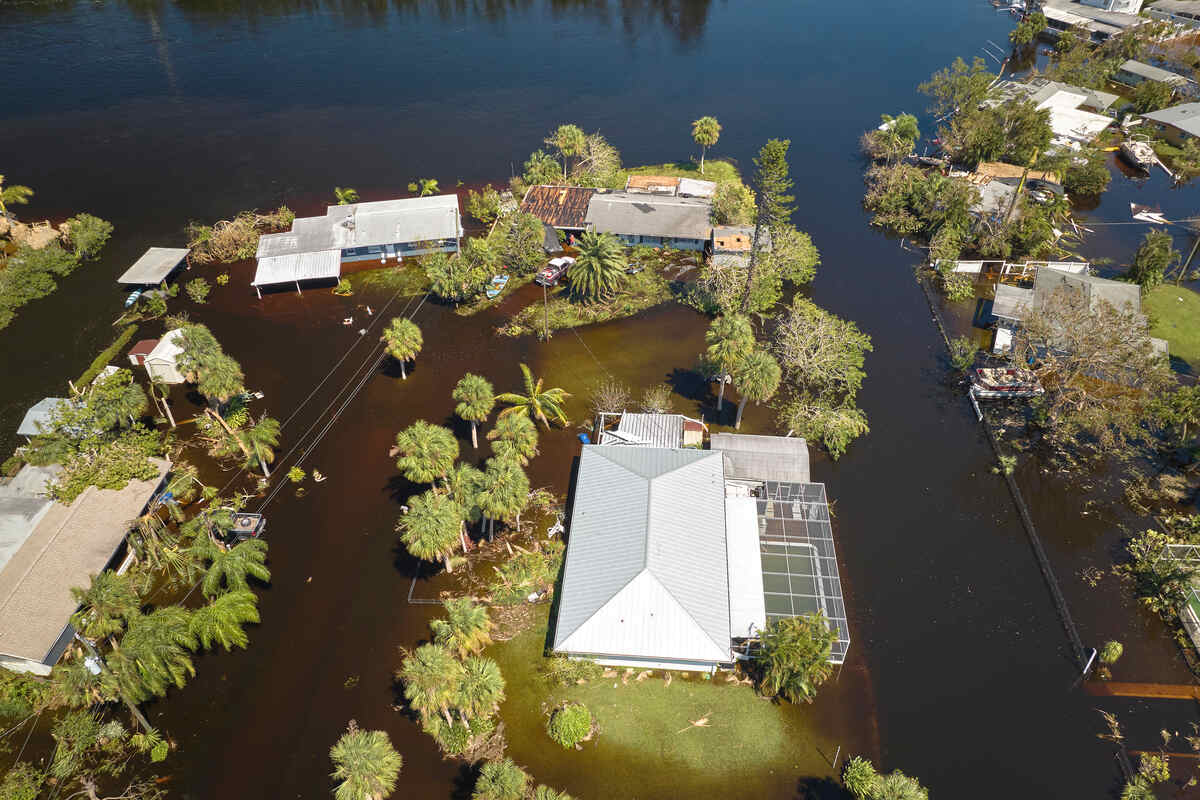
Which parts of the U.S. are most vulnerable to flood damage?
To mark the start of flood season (June to Nov.), LawnStarter ranked 2024’s Counties Most at Risk for Flooding.
We compared over 940 counties with a relatively moderate to very high flood risk according to FEMA. We considered each county’s risk and expected annual loss from riverine and coastal flooding. We also looked at the share of populations of children, elderly, and residents in mobile homes, in addition to local demand for flood insurance.
See where your county landed in our ranking below. To learn how we ranked the counties, see our methodology.
Contents
- County Rankings
- Top 5 Close Up
- Key Insights
- Ask the Experts
- Methodology
- Final Thoughts: Community Flood Control
County Rankings
See how each county fared in our ranking:
Top 5 Close Up
Check out the slideshow below for a closer look at each of our 5 counties with the highest flood risk.
Key Insights
- Gulf Coast states Florida, Louisiana, and Texas account for nearly half of the 100 most vulnerable counties to flooding. Counties in Texas and Louisiana anticipate among the highest economic impacts from riverine flooding, often caused by hurricanes or tropical storms.
- Counties in Mid-Atlantic states like New Jersey, New York, and Virginia also face among the highest flood risk. 6 Garden State counties scored among the 10 counties with the highest overall Economic Impact from coastal and riverine flooding.
- Geologic changes are just one element exacerbating flooding during storms along the mid-Atlantic coast. Research shows much of New York (No. 64), Baltimore (No. 255), and Norfolk, Virginia (No. 39), sank by about 1-2 millimeters between 2007 and 2020.
- All counties in our ranking have at least relatively moderate flood risk, according to FEMA. Less populated counties in Upstate New York, like Warren (No. 939) and Livingston (No. 941) landed near the bottom alongside Tompkins County, in last place. These counties have more moderate flood risks and with smaller populations, lower economic impact from flooding.
Learn more about regional flooding stats below.
Ask the Experts
We turned to a panel of experts to learn more about flood events and how to prepare your home for minimal flood damage. Read their insights below.
- What, if anything, can homeowners do ahead of a flood to mitigate damage?
- What are the steps for assessing damage after a flood?
- Who should purchase flood insurance?
- What are 3 of the most common causes of flooding in the U.S.?
- How can flooding impact residential landscaping?




What, if anything, can homeowners do ahead of a flood to mitigate damage?
First off, keep the water out of your house. This can be:
- Traditional flood barriers.
- DIY flood barriers if it is too late to source traditional flood barriers.
- Flood defense landscaping where you can create somewhat of a raised berm or planter box in areas around the house wherever you can.
I understand you don’t want to “live in a bowl” with a berm all the way around your house, but most yards have sections where they could create a berm or a raised planter bed that will create a part of a protective perimeter. By doing this, it lessens your requirement to purchase, store, and/or deploy traditional flood barriers.
We call it flood defense landscaping where you can then do a “gap closure” by installing flood barriers (for example, across your driveway where a berm is unacceptable). This is the first line of defense.
Additional lines of defense are great where you could simply wrap your house (or doors) with plastic sheeting. It is important that the plastic sheeting is taped (we use heated Gorilla tape) around the perimeter of a door or securely stuck to the soil surfaces such that water gets on top of the plastic first, which then forms a great seal to the ground and prevents seepage.
We call the sump pump the ‘last line of defense’. There are lots of water-activated systems if you have to evacuate but keep in mind that in many flood situations, the power will go out so it is good to have a backup power supply, if at all possible.
What are the steps for assessing damage after a flood?
I focus exclusively on stopping the floodwater. From my perspective, I would assess:
- Where the water comes from.
- What types of erosion took place.
- How long you had to react.
- Where water entered the structure to prevent it from happening again.
NOTE: During a flood, seepage is going to happen. Your objective is to keep the water at bay long enough for it to recede.
Who should purchase flood insurance?
Anybody in a flood zone and even then, there are lots of people who flood due to growing urbanization and non-porous surfaces.
What are three of the most common causes of flooding in the U.S.?
1. Poor urban drainage due to growing development. We are constantly speaking with people who say something along the lines of “We have lived here for many years and have never flooded. Now, we have flooded multiple times in the last year.”
If you are waiting for ‘the city’ or the local officials to fix the problem, you are simply killing time until the next flood arrives. Most people who have flooded can be expected to flood again within about 3-5 years, or less, on average.
2. Hurricane storm surges — this speaks for itself.
3. Debris flows associated with wildfire burn scar areas.
4. Bonus — vehicles driving too fast on flooded roadways. I would have never thought about this before getting into flood defense in 2003, but this is a constant problem. Roads get flooded and the flood water is commonly just up to the doors of residential houses. Then, people enjoy driving fast through flooded streets which creates a wave that lap on the front doors of houses and causes flood water to enter the house.
There are many other causes like spring run-off and rising rivers, but those are the most common.
How can flooding impact residential landscaping?
Flooding washes things away and will cover your yard with mud. If you have mulch, it will float away. If you have gravel type rock and the water is moving fast enough, it will also wash that away. If you have loose soils and moving water, you will have erosion. Overall, grass fares really well during a flood.
Also, here is a link for a simple search of flood prone areas in the USA. Insurance companies also help to provide info for similar maps because they are the ones dealing with the claims from flood loss.
Background:
We have multiple exclusive statewide contracts to supply flood barriers as well as the primary U.S. Federal flood barrier supply and technical support contract for when “Uncle Sam” steps in the help.
I have been doing flood defense operations since 2003 and last year we provided about 30 linear miles of flood barriers for governmental, commercial, and residential customers alike.
NOTE: We have the largest variety of flood barriers than any other company in the USA because we believe there is no such thing as the “best flood barrier.” Every flood is different, every location is different, and different situations call for different solutions. This allows us to provide a short list of what we believe to be the best solutions out of a variety of solutions giving the customer the feeling that they made the best decision based on a selection.
If you are in the market for flood barriers, we have found that most flood barrier providers will generally claim that their product is better than all the others. When conducting flood barrier research, and after hearing this from multiple providers, you are not sure who to trust. Therefore, we found it best to have a ‘menu’ of options to choose from with feedback and support in establishing a protective posture that fits your unique situation.

What are the steps for assessing damage after a flood?
At the U.S. Geological Survey, we assess the height of a flooding event by identifying high-water marks and surveying in their locations after the flood has receded. This information provides a way to estimate how much streamflow was in the river at the time of the flood and supplements our real-time monitoring of rivers and streams across the U.S.
More information on how high-water marks are identified and used is here.
For homeowners, this is a different answer, as property damage and infrastructure within and connected to your home may need to be assessed.
What are three of the most common causes of flooding in the U.S.?
This is a complex question because the common causes of flooding in the U.S. generally vary based on the region.
For example, in places in the U.S. where snow falls, snowmelt events or rain-on-snow events are common causes of flooding.
In places prone to tropical cyclones or hurricanes, flooding is a common result.
And yet, for other places, the main causes of flooding could come from downpours resulting from convective storms that also bring lightning and thunder. Understanding the causes of flooding in the U.S. and how they may change in the future is an important, but open, area of research.

What, if anything, can homeowners do ahead of a flood to mitigate damage?
Homeowners can take several proactive steps to mitigate damage from potential floods.
1. First, it’s crucial to understand the flood risk of their property, often available from local government resources or flood risk maps.
2. Elevate structures as well as electrical systems and utilities.
3. Use flood-resistant building materials for renovations, which is known as waterproofing the structure.
4. Installing pumps with battery backups can significantly reduce damage.
5. Additionally, constructing barriers such as sandbags or permanent levees can help deflect water.
6. Homeowners should also prepare an emergency kit and create a family evacuation plan to ensure personal safety.
What are the steps for assessing damage after a flood?
1. After a flood, safety is the primary concern. Homeowners should first ensure that it is safe to return to their property, checking for structural damages like weakened walls and damaged flooring. It’s important to document all damages by taking photos or videos, as these will be necessary for insurance claims.
2. Removing water and drying out the home quickly is crucial to prevent mold growth.
3. Hiring professionals for electrical systems and gas checks is essential before turning on the house’s power and utilities.
4. Finally, contacting insurance companies to initiate claims and arranging for detailed inspections by experts can further aid in the recovery process.
Who should purchase flood insurance?
Flood insurance should be considered by any homeowner or renter residing in areas with a known flood risk, which includes zones designated by the government or insurance bodies as flood-prone.
It is important to note that flooding can also occur outside these designated areas, so it’s advisable for all property owners and renters to consider flood insurance, if applicable. This insurance is especially critical in regions prone to hurricanes, storms, or in areas near water bodies that can overflow.
What are three of the most common causes of flooding in the U.S.?
Three of the most common causes of flooding in the U.S. include:
- Hurricanes and tropical storms.
- Heavy or prolonged rainfall.
- Rapid melting of snow.
Hurricanes and tropical storms can bring intense rainfall and storm surges that overwhelm natural and man-made systems.
Heavy rains can quickly exceed the absorption capacity of soil and the containment of drainage systems, particularly in urban areas.
Lastly, rapid snowmelt in the spring can produce large amounts of water that rivers and lakes cannot contain, leading to overflows.
How can flooding impact residential landscaping?
Flooding can severely impact residential landscaping, from washing away plants and soil to introducing contaminants and pests.
- Saturated soil can suffocate plant roots and lead to the death of grass, flowers, and trees.
- Erosion caused by strong water flows can strip away topsoil and plant nutrients, degrading the quality of the yard and making it difficult for new plants to grow.
- Additionally, floodwaters can deposit harmful chemicals, salts, and invasive plant seeds, potentially leading to long-term issues for the garden and landscape.
To mitigate these effects, homeowners can consider landscaping with native plants that are more tolerant of local flood conditions and using strategic grading to direct water flow away from valuable plants.
Methodology
First, we determined the factors (metrics) that are most relevant to rank the Counties Most at Risk for Flooding. We then assigned a weight to each factor based on its importance and grouped those factors into 4 categories: Flood Risk, Economic Impact, Preparedness, and Population Vulnerability. The categories, factors, and their weights are listed in the table below.
For each of the 943 counties with a relatively moderate to very high risk of coastal and/or riverine flooding according to FEMA, we then gathered data on each factor from the sources listed below the table.
Finally, we calculated scores (out of 100 points) for each county to determine its rank in each factor, each category, and overall. A county’s Overall Score is the average of its scores across all factors and categories. The highest Overall Score ranked “Best” (No. 1) and the lowest “Worst” (No. 943).
Notes:
- The “Worst” among individual factors may not be No. 943 due to ties.
- Some counties in our ranking identify by a different geographical term. Baltimore City, Maryland, for example, operates as both a city and county separately from Baltimore County, Maryland. In Louisiana, counties are known as “parishes.”
- Coastal Flood Risk — calculated by FEMA — considers the annualized frequency of and exposure to coastal floods as well as social vulnerability and community resilience factors.
- Riverine Flood Risk — calculated by FEMA — considers the annualized frequency of and exposure to riverine floods as well as social vulnerability and community resilience factors.
- Coastal Flooding Expected Annual Loss — calculated by FEMA — measures the financial impact of expected annual building and population loss due to coastal floods.
- Riverine Flooding Expected Annual Loss — calculated by FEMA — measures the financial impact of expected annual building and population loss due to riverine floods.
Sources: Federal Emergency Management Agency, FloodSmart.gov, Google Ads, and U.S. Census Bureau
Final Thoughts: Community Flood Control
Flooding accounts for two-thirds of damage costs from all natural disasters in the U.S.
With sea levels rising, coastal cities sinking, and dams and levees aging, flood events may become even more frequent and destructive.
2023 had historic rainfall and flooding events across the country, from Southern California to Vermont. Since many people are drawn to coastal and riverside living, floodplain populations continue to grow despite increasing environmental risks. Today, over half of Americans reside in an area with 2X the risk of experiencing a 100-year flood.
With an urban flooding event impacting U.S. cities every 2 to 3 days over the last 25 years, urban stormwater systems are struggling to keep up with early and extreme snowmelt, higher precipitation rates, and stronger hurricanes.
U.S. cities generate so much stormwater runoff each year that it could supply 93% of the nation’s municipal and industrial water usage. Stormwater infrastructure upgrades and natural flood mitigation responses — like stormwater ponds, beach nourishment, and floodplain preservation and restoration — can help reduce urban flooding impacts and recharge drought-stricken aquifers.
Only 4% of U.S. homeowners are protected by flood insurance. Flood insurance can be a worthwhile investment, even for homeowners who don’t live in a designated flood zone.
Take other steps to protect your property from flood damage and help it recover after a flood with help from our guides below.
- Learn how to keep water drainage from soaking your lawn.
- See if it’s legal in your area to harvest rainwater with a rain barrel.
- Install a french drain to divert stormwater and improve drainage.
- Keep an eye out for grass mold, fungus, and other lawn diseases after a heavy rainstorm.
- Build a retaining wall.
- Reduce and control erosion on your property.
- Clean up your yard after a hurricane or other natural disaster.
Hire a local LawnStarter crew to help clean up and restore your lawn after a flood event.
Media Resources
Quotes from LawnStarter Editor-in-Chief Jeff Herman
- Statistics show that most Hurricane Harvey victims were uninsured. Residents of Harris County, Texas (No. 1), home to Houston, demonstrate the highest demand for flood insurance. Houston is one of the fastest-sinking cities in the world.
- Counties in Florida like Dixie (No. 12) and Putnam (No. 80) have among the highest flooding risk and high shares of residents who are elderly or living in mobile homes.
- Florida has the best access to flood insurance providers, with 31. However, only 13% of Sunshine State residences are insured against flooding. The state is trying to develop a more resilient coast with projects like living shorelines.
- 4 coastal Oregon counties — Coos (No. 13), Douglas (No. 35), Clatsop (No. 38), and Tillamook (No. 50) — stand out as the only Pacific Coast counties among the 50 most vulnerable counties for flooding.
- Horry County, South Carolina (No. 21), is home to Charleston, another rapidly sinking city. Locals are fighting for wetland conservation and more flood-resistant building codes.
- Inland counties with the greatest risk of riverine flooding include Shelby County, Tennessee (No. 328), Washoe County, Nevada (No. 339), and Davidson County, Tennessee (No. 394) — home to Memphis, Reno, and Nashville, respectively.
- Subsidence and rising sea levels are poisoning trees with saltwater — accelerating tree loss and creating ghost forests along the Atlantic, Pacific, and Gulf coasts, and in Alaska.
Main Photo Credit: Hurricane Ian flooded houses in Florida residential area: bilanol / Adobe Stock / License
